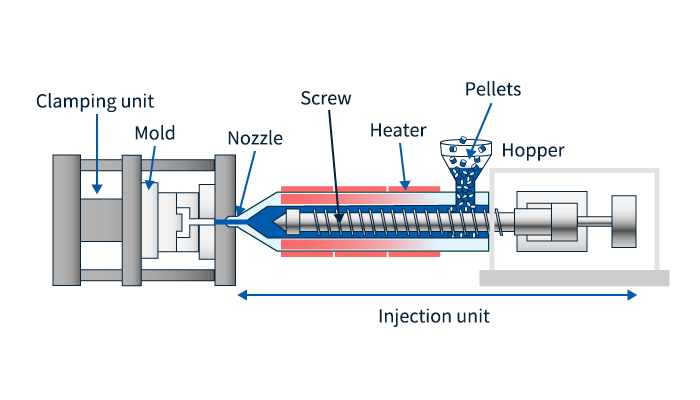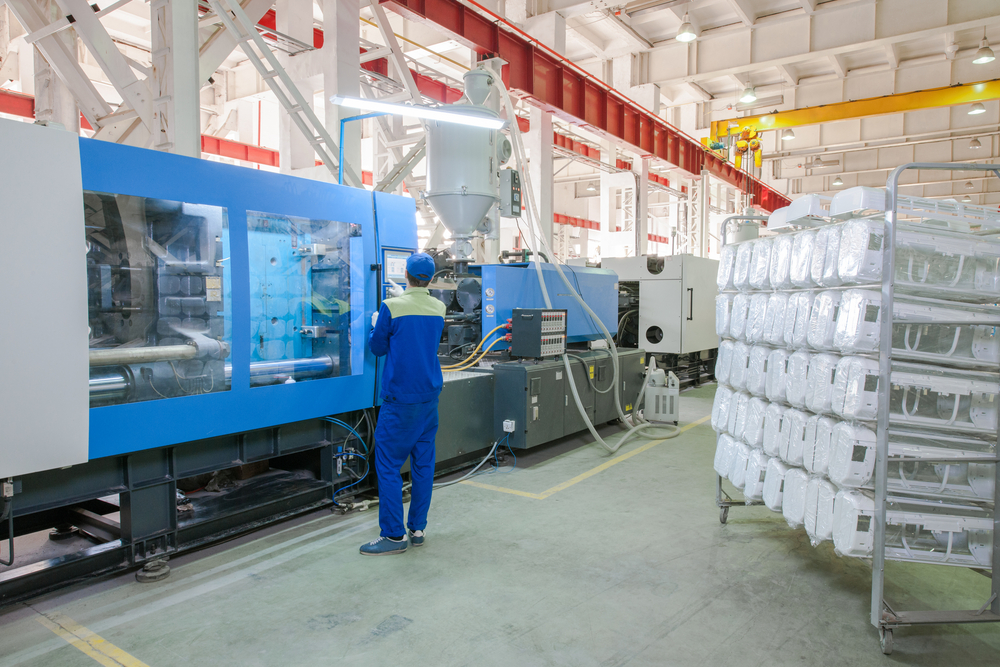Understanding the Basics of Plastic Injection Molding Procedures
Plastic injection molding functions as a foundation of modern-day manufacturing, offering a systematic strategy to producing complicated parts with precision. This process not only includes the basic steps of melting and infusing materials into mold and mildews however additionally entails a nuanced understanding of various influencing elements, such as temperature and pressure. As industries progressively demand effectiveness and high quality, the details of this technique become more crucial. Checking out these crucial components can reveal just how even minor adjustments can lead to significant improvements in production outcomes, raising inquiries concerning the possibility for technology in this recognized process.
What Is Plastic Injection Molding?
Plastic injection molding is an extensively utilized production process that transforms thermoplastic and thermosetting products into specific and complex shapes. This technique is preferred for its capability to create high volumes of the same parts with exceptional precision, making it an essential technique in various markets, consisting of automotive, customer items, and medical gadgets.
The procedure involves melting the selected plastic product and injecting it into a mold and mildew under high stress. The mold, developed to the specs of the wanted part, allows the molten plastic to materialize as it cools down and solidifies. When the product has actually hardened, the mold is opened, and the ended up part is ejected.
Plastic shot molding offers a number of benefits, consisting of lowered waste, uniformity in manufacturing, and the capability to incorporate elaborate styles that might be testing with various other making approaches. In addition, it sustains a wide variety of products, each giving unique residential properties that can be customized for details applications. As markets remain to introduce, plastic shot molding remains at the leading edge, making it possible for the development of advanced items that fulfill evolving customer needs.
The Shot Molding Refine
The injection molding procedure is an innovative strategy that entails a number of crucial stages to produce premium plastic elements. Plastic pellets are fed into a heated barrel where they are thawed right into a viscous liquid. This molten plastic is after that infused under high pressure right into a precision-engineered mold and mildew, which shapes the material right into the preferred form.
As soon as the mold and mildew is filled up, the plastic is allowed to cool down and strengthen, taking the shape of the mold dental caries. Air conditioning time is important, as it affects the cycle time and the last buildings of the molded part. After enough cooling, the mold and mildew opens up, and the finished part is ejected utilizing ejector pins.

Materials Used in Injection Molding
Various materials can be utilized in the injection molding process, each offering unique homes that satisfy certain applications. One of the most frequently made use of products include thermoplastics, thermosetting plastics, and elastomers.

Thermosetting plastics, like epoxy and phenolic resins, undergo a chemical modification throughout the curing procedure, resulting in a stiff, stringent structure. These materials are excellent for applications needing high warmth resistance and structural stability, usually utilized in electrical insulators and automotive parts.
Elastomers, including silicone and rubber-based products, give flexibility article source and durability. Their special residential or commercial properties make them appropriate for applications that require flexibility, such as gaskets and seals.
Additionally, specialty materials like bio-based plastics and composites are getting grip for their ecological advantages and boosted efficiency characteristics, broadening the scope of injection molding applications in different markets. Comprehending the properties of these materials is essential for choosing the proper kind for certain jobs.
Benefits of Shot Molding
Injection molding stands apart as an extremely effective manufacturing process that offers countless benefits for generating intricate get rid of accuracy. Among the most significant benefits is the capacity to develop complex styles that would be difficult or challenging to achieve with various other approaches (Plastic Injection Molding). The process enables tight resistances and in-depth functions, making certain high-grade parts
In addition, injection molding is known for its quick production capabilities, making it an excellent option for high-volume manufacturing. As soon as the mold is developed, components can be produced promptly, decreasing lead times and boosting overall performance. This efficiency not just reduces manufacturing expenses yet likewise gives an one-upmanship out there.
The versatility of products used in shot molding better improves its allure. A large range of thermoplastics and thermosetting polymers can be utilized, permitting manufacturers to choose products that ideal satisfy their details demands, including flexibility, stamina, and warmth resistance.
Additionally, the procedure reduces waste, as excess material can usually be recycled and reused. This sustainability facet adds to a decreased environmental effect, making shot molding a liable production choice. In general, the advantages of shot molding make it a favored approach for several industries.
Factors Affecting Product High Quality
While many variables can affect item top quality in shot molding, recognizing these components is essential for accomplishing ideal outcomes. Secret elements include material choice, processing specifications, and mold design.
Material selection plays a vital role, as different polymers show unique residential or commercial properties that affect flowability, stamina, and thermal security. Insufficient material choice can lead to defects such as bending or insufficient dental filling.
Processing parameters, including cycle, pressure, and temperature time, have to be diligently regulated. Variations in these setups can lead to variances partially measurements and surface finish. For circumstances, excessively heats might trigger degradation of the polymer, while poor stress can result in brief shots.
Mold layout is similarly essential, as it establishes the circulation of the molten plastic and the cooling process. Inadequately developed mold and mildews may lead to unequal cooling prices, resulting More hints in dimensional mistakes and recurring tensions.

Conclusion
In conclusion, plastic injection molding works as a critical manufacturing procedure that allows the efficient production of top quality components. Proficiency of the shot molding procedure, including the understanding of materials and the impact of numerous aspects on item high quality, is important for achieving optimal outcomes. The advantages of this method, such as cost-effectiveness and design versatility, further emphasize its value throughout multiple sectors, strengthening its condition as a preferred selection for high-volume manufacturing.
Plastic injection molding offers as a foundation of modern production, supplying a methodical strategy to creating complex parts with precision.Plastic shot molding uses several benefits, including lowered waste, consistency in manufacturing, and the ability to include detailed styles that may a fantastic read be testing with other making techniques (Plastic Injection Molding). As sectors continue to introduce, plastic injection molding continues to be at the leading edge, enabling the advancement of innovative products that fulfill developing consumer needs
The injection molding procedure is a sophisticated method that involves a number of vital stages to produce premium plastic components.In final thought, plastic shot molding serves as an important manufacturing process that makes it possible for the efficient production of high-grade components.